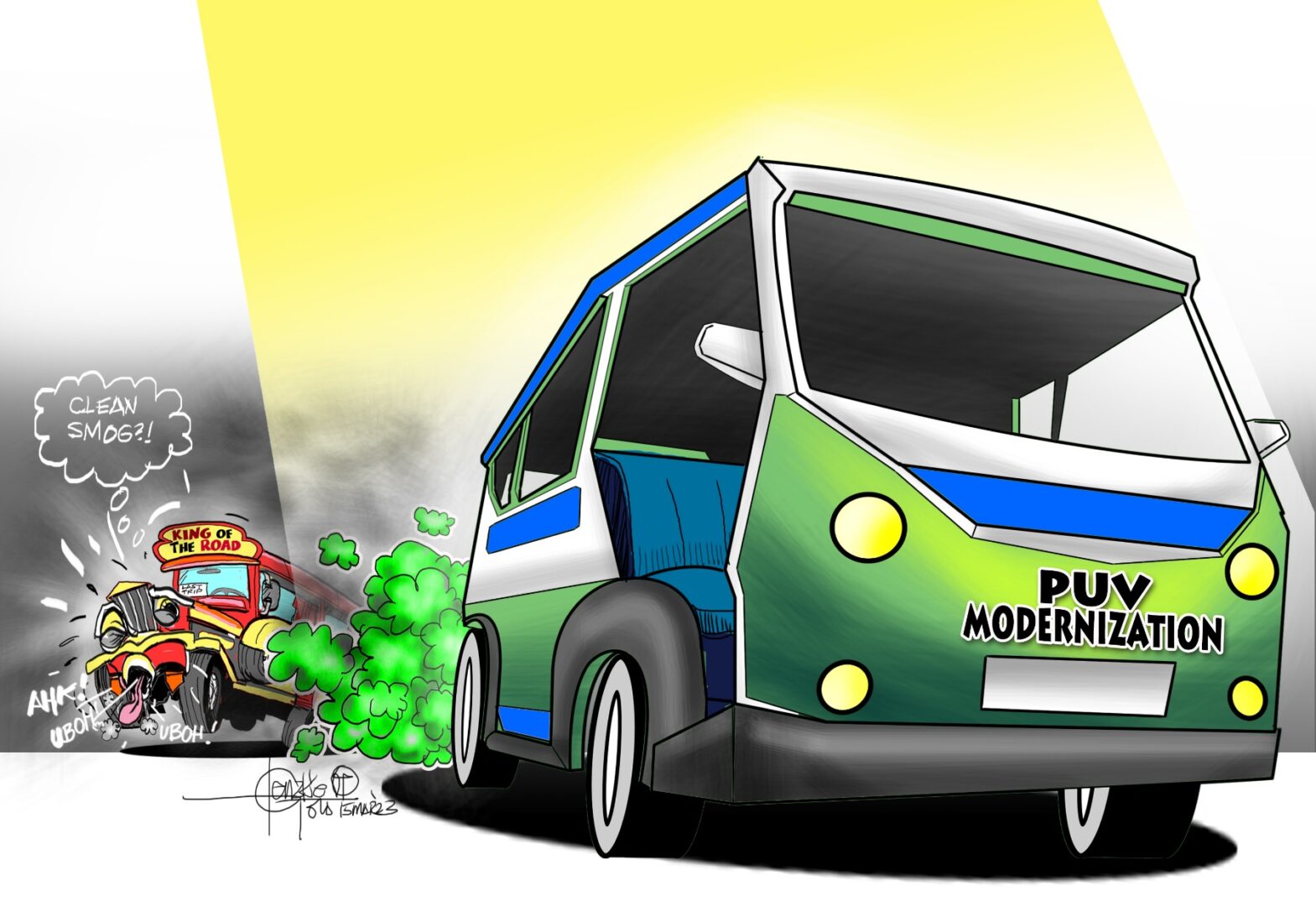Local government units taking the side of drivers and operators seemingly averse to the Public Utility Vehicle Modernization Program of the government could perhaps take a cue from Davao City which will soon rid its streets of old, dilapidated jeepneys.
As the local government implements the modernization of its public transportation system, the city is preparing to bid goodbye to PUJs that are over 15 years old, according to a Land Transportation Franchising and Regulatory Board official there.
The official, in a report, said owners of jeepneys that will be scrapped will be paid per unit based on their appraised value as the city prepares to shift to the High Priority Bus System.
The amount that will be received by owners of old jeepneys for every scrapped unit will be on top of the financial, technical, and livelihood assistance that the government will provide as part of the social development package for affected drivers and operators.
Under the HPBS scheme, low-floor city buses will replace jeepneys. A “scrapping facility” will be established to fast-track the transition which sees the HPBS already up and running in the last quarter of next year.
Drivers of the scrapped jeepneys will be prioritized for hiring by operators of the HPBS buses but they will be required to undergo training with the Technical Education and Skills Development Authority to equip them with skills before they can qualify to be bus drivers.
Affected drivers can also work as mechanics and other related positions for the maintenance of the units at the terminal depots. The HPBS will employ around 1,000 bus drivers.
According to the Department of Transportation, HPBS will have 29 bus routes divided into four tiers: MetroDavao will form the core services that will connect all major commercial centers along five routes; DavaoInter will run along eight routes connecting the inner urban areas directly to the Davao Central Business District; DavaoFeeder will run along nine routes linking smaller centers and areas of more dispersed populations to the MetroDavao services; and DavaoLocal will provide a link between the outer rural areas of the city and the main transport system or the integrated terminals.
While Davao already has a blueprint for what it intends to do, major urban areas such as the National Capital Region seem to be hard-pressed to convince drivers and operators of the benefits modernization brings.
The DoTr has already clarified that the PUV modernization does not seek to erase the iconic King of the Road. It pointed out that the jeepney design is not covered by the Philippine National Standards which only include dimensional limits, engine requirements, and safety features that modern public utility vehicles must have.
It emphasized that it has no restrictions regarding the design or the look of jeepney units. More so, this does not seek to erase the iconic jeepney designs ingrained in Philippine culture.
The DoTr said the PNS only seeks to ensure that PUVs comply with the Euro 4 emissions standards, in line with an Administrative Order by the Department of Environment and Natural Resources as mandated by the United Nations.
PUV groups held a transport strike last week to express their opposition to the program, as operators appealed for more time to shift to modern jeepneys beyond the 30 June deadline.
The transport strike was initially set to last a week but was cut short after representatives of transport groups met with President Communications Office Secretary Cheloy Garafil and Office of the Executive Secretary Undersecretary Roy Cervantes, who represented President Ferdinand Marcos.
Malacañang thanked representatives of the transport groups for lifting the strike and vowed to review the modernization program. The extended deadline till the end of the year, he said, would give the Palace time to address the concerns of the group.
Come to think of it, the Davao blueprint could very well assuage both the government and the transport groups that modernization, indeed, is possible if only all sides listen to reason.
